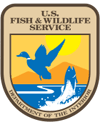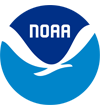|
Pacific Remote Islands Marine National Monument Pacific Ocean |
 |
 USF&WS photo | |
Welcome to the Pacific Remote Islands Marine National Monument! The Monument encompasses approximately 495,189 square miles of open ocean, coral reef, and island habitats, making the total area of the Monument nearly five times the size of all the U.S. National Parks combined and nearly twice the size of the state of Texas. Within the boundaries of the Monument rest seven national wildlife refuges: Howland, Baker, and Jarvis Islands, Johnston, Wake and Palmyra Atoll, and Kingman Reef.
The Pacific Remote Islands Marine National Monument was established on January 6, 2009, by President George W. Bush under the authority of the Antiquities Act of 1906, but expanded to its current size on September 25, 2014, by President Barack Obama. It is one of five Marine National Monuments managed in partnership by the Service, including four Marine National Monuments in the Pacific. The Monument encompasses approximately 495,189 square miles of open ocean, coral reef, and island habitats. For the areas surrounding Howland and Baker Islands, Kingman Reef, and Palmyra Atoll National Wildlife Refuge, the Monument extends protections out to 50 nautical miles from the refuges shorelines. In the case of Jarvis Island, and Johnston and Wake Atoll National Wildlife Refuge, the protections extend to 200 nautical miles from the refuges shorelines.
Presidential Proclamation 8336 established the Monument, giving the Secretary of the Interior management responsibility for it, in consultation with the Secretary of Commerce. Presidential Proclamation 9173 expanded the Monument around Jarvis Island and Johnston and Wake Atolls to include seamounts and deep ocean features important to scientific exploration, study, and research.
The Secretary of Defense continues to manage Wake Atoll under a 1972 agreement with the Department of the Interior. Similarly, the Department of Defense continues to have administrative jurisdiction over terrestrial portions of Johnston Atoll until jurisdiction is returned to the Department of the Interior.
Both the Proclamations prohibit commercial fishing within the monument, but gives the Secretary of Commerce (in consultation with the Secretary of Interior), through NOAA, primary responsibility for managing fishery-related activities from 12 to 50 or 200 nautical miles from the islands.
Our History
The history within the Pacific Remote Islands Marine National Monument is vast. Although Polynesians were the first visitors to many of the islands within the Monument, westerners “rediscovered” them in an uninhabited state as early as the 1820s.
Howland, Baker, and Jarvis Islands were claimed by the United States in 1856 under the Guano Act. A Story of the Hui Panalā‘au of the Equatorial Pacific Islands tells some of the heroic story of more than 130 "Colonists", enlisted from schools in Hawai'i before World War II, who helped consolidate the U.S. claim to the islands from 1935 until 1942.
The Colonists constructed settlements and served for months on the remote islands. They even prepared for aviators Amelia Earhart and Fred J. Noonan on their planned to stop over at Howland Island on their famous world circumnavigation flight in 1937. However, radio contact was lost after departing for Howland, and to this day their exact fate is unknown. The Amelia Earhart Day Beacon on Howland is named in her honor. In 1941, the Colonists were attacked several times following the attacks on Pearl Harbor. During the first wave of attacks, two young men on Howland, Joseph Keli‘ihananui and Richard “Dickey” Whaley, were fatally wounded. The remaining Hui members were rescued and returned to Hawai'i in 1942.
Johnston Atoll is an ancient atoll, and along with Wake Atoll, is probably the oldest in the Pacific Ocean. It is the northernmost of the Line Islands. Once claimed by both the United States and the Kingdom of Hawai‘i, the atoll was placed under control of the U.S. Navy in 1934. During World War II, it was an important aircraft and submarine refueling station; in 2004 the military mission ended and the base was dismantled, except for one facility.
Wake Atoll is the northernmost atoll in the Marshall Islands geological ridge and perhaps the oldest living atoll in the world. Used by ancestral Micronesian navigators, and later by a cable station and Pan American Airways, the atoll has been primarily used by the U.S. military since before World War II. During the war, it was the site of an history battle and was overtaken and occupied by Japanese soldiers from 1941-1945.
Part of the Line Islands chain, Palmyra Atoll and Kingman Reef are remnants of volcanoes from some 65-120 million years ago. Kingman is known to be the most undisturbed coral reef within the U.S., complete with a greater proportion of apex predators than at any other studied coral reef ecosystem in the world. Kingman Reef’s lagoon one was an overnight stop on the Pan American Airways clipper route. Palmyra hosted a 6,000-man Naval Air Station in World War II, complete with dock and airfield.
Management
Established by Presidential Proclamation in January 2009 and expanded through Presidential Proclamation in 2014, the Pacific Remote Islands Marine National Monument is cooperatively managed by the Secretary of Commerce (NOAA) and the Secretary of the Interior (U.S. Fish and Wildlife Service), with the exception of Wake and Johnston Atolls, which are currently managed by the Department of Defense. National Wildlife Refuges also exist at each of the islands within the Monument, with Howland, Baker, and Jarvis designated as Refuges in 1974; Johnston in 1926; and Kingman and Palmyra in 2001.
Unique Features
The Pacific Remote Islands Marine National Monument sustains a diversity of species including corals, fish, shellfish, marine mammals, seabirds, land birds, insects, and vegetation not found anywhere else in the world. Many threatened, endangered, and depleted species thrive in the area, including the green and hawksbill turtles, pearl oysters, giant clams, reef sharks, coconut crabs, groupers, humphead and Napoleon wrasses, bumphead parrotfish, dolphins, and whales.
As the vehicles arrived back at the surface after the final dive of the expedition, viewers were treated to the sight of an oceanic whitetip shark. Photo: NOAA Office of Ocean Exploration and Research, 2017 Laulima O Ka Moana.
Johnston Atoll is an ancient atoll (probably one of the oldest in the Pacific Ocean) and is comprised of Johnston, Sand, North, and East Islands. It’s the northernmost point of the Line Islands archipelago. Johnston supports at least 45 coral species, including a thriving table coral community and a dozen species found only in the Hawaiian and northern Line Islands. Large populations of seabirds, sea turtles, whales, and reef sharks are found here as well.
Part of the Line Islands chain, Palmyra Atoll and Kingman Reef are also remnants of volcanoes from some 65–120 million years ago. Kingman is the most undisturbed coral reef within the United States, complete with a greater proportion of apex predators (sharks and jacks) than any other studied coral reef ecosystem in the Pacific. Palmyra Atoll, which consists of about 50 islets and a few lagoons, supports breeding populations of 11 species of seabirds, including one of the largest red-footed booby colonies in the world and the largest black noddy colony in the Central Pacific.
Many nationally and internationally threatened, endangered, and depleted species thrive at Palmyra and Kingman, including sea turtles, pearl oysters, giant clams, reef sharks, coconut crabs, fishes, and dolphins. Both Palmyra Atoll and Kingman Reef support higher levels of coral diversity (180–190 species) than any other atoll or reef island in the central Pacific.
Farreid glass sponges are visible in the foreground of this fairly high-density sponge community found at about 2,360 meters (7,740 feet) depth. Corals were also present, but in lower abundance. Iridogorgia and bamboo coral are in the background. Photo: NOAA Office of Ocean Exploration and Research, 2017 Laulima O Ka Moana.
Made up of Wake, Wilkes, and Peale Islands, Wake Atoll is the northernmost atoll in the Marshall Islands geological ridge and perhaps the oldest living atoll in the world. In addition to being an active U.S. Air Force airfield, the atoll provides important seabird and migratory shorebird habitat, as well as vibrant coral reefs that support large populations of fishes in the monument waters. More than 300 fish species and 100 coral species thrive on the shallow coral reefs, along with giant clams, marine turtles, and spinner dolphins.
Howland, Baker, and Jarvis Islands hug the Equator and were formed as fringing reefs around small islands built by volcanoes some 65–120 million years ago. They support grasses adapted to the arid climate at the Equator and host colonies of 15 different breeding seabird species, some with population sizes of international significance.
Beyond the shallow fringing reefs and terraces, the slopes of the extinct volcanoes drop off sharply to the deep floor of the equatorial Pacific Ocean. Here, counter currents create localized, nutrient-rich upwelling in the shallows near the islands that result in high fish biomasses. These remote and rarely visited reefs are characterized by a large proportion of apex predators in the fish community; giant clams, sharks, and sea turtles are also abundant.
Source: USF&WS and NOAA Websites (May 2023)
Brochures/Site Bulletins

Documents
A Brief History of Human Activities in the US Pacific Remote Islands (Shelly Magier and Lance Morgan, Marine Conservation Institute, August 2012)
Coral reef condition: A status report for the Pacific Remote Islands (2018)
Marine Science Lesson Plans about the Pacific Marine National Monuments: Options for Enhancing Ocean Literacy in the 7th through 12th Grade Classroom (©Laura K. Nelson, 2014)
Overview, Pacific Remote Islands Marine National Monument (undated)
Planning Update Number 1, Pacific Remote Islands Marine National Monument (September 2011)
Proclamation 8336—Establishment of the Pacific Remote Islands Marine National Monument (George W. Bush, January 6, 2009)
Proclamation 9173—Pacific Remote Islands Marine National Monument Expansion (Barack Obama, September 29, 2014)
Status of Coral Reefs of the Pacific and Outlook: 2011 (Andrew Chin, Thierry Lison de Loma, Katie Reytar, Serge Planes, Karin Gerhardt, Eric Clua, Lauretta Burke and Clive Wilkinson, 2011)
Status of Coral Reefs of the Pacific — 2011 Addendum (Jean Kenyon, 2011)
Protecting Pacific Marine Monuments with Sylvia Earle
Books

pacific-remote-islands/index.htm
Last Updated: 23-May-2023

